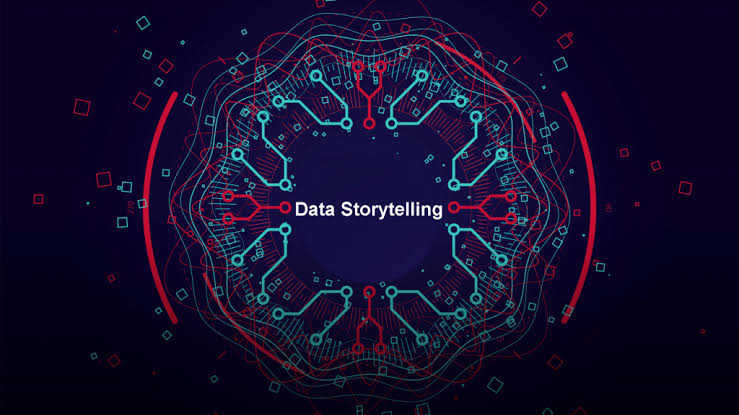The moment your company finds itself mining for all kinds of data, the next step would be how to generate value from it. The numbers that the company comes up with can be vital enough to make or break businesses. But, without the correct tools and mindset, even a penny of advantage may not be gained. Insights have to be injected into the processes and a crucial translation from data to information and finally into knowledge will be a key element in business outcomes. Chief economists and CEOs of prestigious companies have echoed the same sentiments from various perspectives. Data storytelling is the future and with this the components required to harness power in data will solidify businesses going forward into the next few decades. The same words from powerful business people from a decade ago never looked as significant as it is today. Data is the future and mining, interpreting and using it is the driving force.
Data is ever present in today’s digital world. This comes after a few decades of transforming analog into computer interfaced lifestyles. Companies recognize this and have come to realize the value of data skills. Top job search sites have commented on the particular skill as one of the most sought after resume entry. While it was never on top, it was always one of the categories that never goes away and have started to peak in the last few years. Curious enough, the skill particularly is in demand is the ability to create a list of recommendations from raw data instead of the decision making itself. This gave recruiters a field day of recruiting individuals with degrees that have a heavy background in numbers and interpretation. Degrees in economics, statistics, mathematics are easily topping their candidate lists.
Data Storytelling is the Future
The trend for data storytelling have been up for the last few years and experts do not see it stumbling down anytime soon. Businesses continue to strive to move towards automation and enable AI in their businesses along with a demand for higher intelligence in decision making support. This means that the pool of professionals generating information from raw data will expand to more than just the data scientists and analysts. The need is further intensified due to the availability of various tools that allows mildly technical personnel to dip their feet into the data analysis scene. Experts suggests that this will result in a boom of data being mined and generated everyday in companies. The task however still falls into the data storyteller and how he or she will be able to communicate the value of the interpreted information. If no valuable insight is produced, no narrative will be put in place and all the hard work of attaining information will not be put to use come decision making.
Aspects of Data Storytelling
Data visualization experts agree that numbers are indeed a story waiting to be told. But how it will be told is often the more difficult question that needs pondering. Numbers need a voice and that is how visualization usually materialize. The drive to have data have its say in front of a keen audience will make sure that effort put into building the data will not be put to waste. Data storytelling is often wrongly equated into simple data visualization. This is a pitfall that even top executives often fall prey on. Visualization, though a crucial aspect, is only part of the grand engine that is data storytelling. On the other hand, charts, dashboards, infographics and other forms of presentation are merely tools to aid data storytelling. The other aspects of storytelling that are often neglected are the data science and the narrative.
It is vital to understand how the three elements, Data Science, Data Visualization and Narrative relate and connect with each other. The task of the data storyteller can be summarized into combining these three elements and make sure that they work with each other.
The Goals of Data Storytelling
Data storytelling aims to explain, enlighten and engage the audience. When a proper narrative is set alongside valuable data, it is said that the presenter will be able to explain what is happening with a particular insight. If the proper pretexts, and contexts are included in the presentation, they can fully appreciate the results and even the methods of the data science behind it.
As part of a good data storytelling sequence, visuals are often employed so that the audience can be enlightened. Visuals tap on human nature to recognize patterns and derive their own conclusions from it. In itself, visualization can be a difficult skill to master. It takes a lot of experience to craft graphs and customize dashboards that reveal information that you wish to highlight to the audience.
And lastly, when a proper narrative is put in place along with visuals, the audience can focus on the presentation. The movie industry is the living testament to how much society will pay to stay engaged. It is no surprise that movie industries rake up millions in box office revenue as it is simply human nature to enjoy a visual representation and narrative combined.
When the three aspects of Narrative, Data Science, and Visualization is used in the equation, the presenter can drive change to its audience. This is ultimately the goal of data storytelling.
How Important is Data Storytelling
The earliest of societies have come together on campfires listening to elders tell their stories. This is not just a means of entertainment but a vital conduit to knowledge crafted from years of experience. Generations later, the same stories would have been told over and over, and would prove to be a vital factor to the survival of the race.
Data storytelling is not so different from the days of old. The same stories told are simply rewritten in ways that would benefit businesses and the theatrics of storytellers transformed into the slick canvasses of the modern photo editors.
